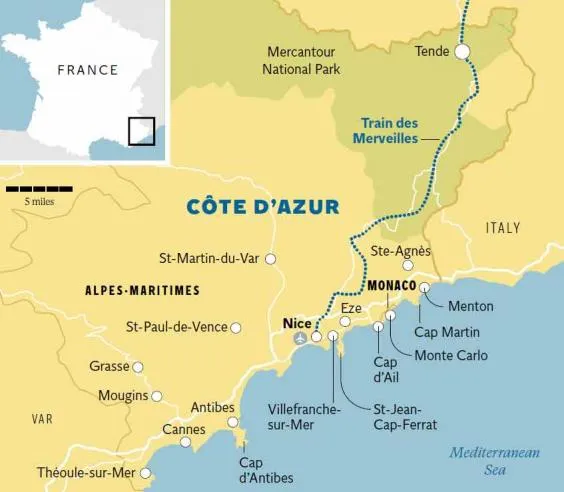Nice, the sparkling emerald of the French Riviera (Côte d’Azur), has long enchanted travelers with its Mediterranean beauty and unique cultural blend of France and Italy. However, few know that Nice is also a living museum of Belle Époque architecture, a golden era of France. Join us as we explore the magnificent buildings, charming streets, and the historical stories behind this beauty.
Nice: A Crossroad of Culture and History
Nice, the fifth-largest city in France, is located 930 km south of Paris, but only 20 km from Monaco and 30 km from the French-Italian border. With a population of around 1 million, Nice is an important economic, cultural, and tourism center in the Provence-Alpes-Côte d’Azur region. Before officially becoming part of France in 1860, Nice belonged to Italy under the Casa Savoia dynasty. Therefore, when visiting Nice, you will experience the unique blend of architecture, lifestyle, and cuisine from both countries.

With France’s third busiest airport, Nice Côte d’Azur, and a modern transportation network, Nice is an ideal destination for tourists worldwide. The city is not only famed for the tourism service industry but is also a hub of industry, science, and advanced technology with prestigious tech parks such as Acropolis and Sophia Antipolis.
Belle Époque Architecture: Nice’s Golden Imprint
Nice is renowned for its rich architectural heritage, spanning five centuries of formation and development. Particularly, the Belle Époque period (late 19th to early 20th century) left a significant mark on the city’s appearance with grand and splendid villas and hotels.
During this time, Nice attracted the European aristocracy and upper class, who came here to enjoy the warm Mediterranean climate and breathtaking scenery. To accommodate the elite’s needs, a series of luxurious buildings were constructed in the Belle Époque style.
Palais Lascaris: Witness of the Baroque Era
Before diving into Belle Époque architecture, visit Palais Lascaris, a beautiful Baroque architecture building, now a Musée de France. Palais Lascaris is a testament to the wealth and power of the Lascaris family, one of Nice’s leading noble families.

Promenade des Anglais: Symbol of Nice
Promenade des Anglais is Nice’s most famous seafront walkway, twisting along the Mediterranean coast. This road was built in the first half of the 19th century by the English community residing in Nice.
During the Belle Époque era, Promenade des Anglais became a gathering place for the elite, where they strolled, admired the scenery, and engaged in entertainment activities. Lined with luxurious hotels, grand villas, and elegant cafes, the road embodies the Belle Époque style.
After World War I, Nice’s urban planning underwent a revolution. The city transitioned into a modern city following the Art Deco movement. Modern materials and building techniques quickly replaced the outdated structures on Promenade des Anglais, creating a new look for this iconic road.
Historic Squares: Witnesses of History
Nice is also famous for its historic squares, built from the 10th century, located at the edge or outside the old town. Place Saint-François, Place Garibaldi, Cour Saleya, Place Charles-Albert, Place Masséna, and Place de la Croix de Marbre are must-visit destinations for those seeking to explore the history and architecture of Nice.

Art Deco Architecture: The Continuation of Belle Époque
After the Belle Époque era, Art Deco architecture continued to thrive in Nice. Several streets such as Rue Verdi, Promenade des Anglais, and Victor Hugo Avenue feature buildings in the Art Deco style, characterized by strong geometric lines, intricate decorative patterns, and the use of modern materials.
Conclusion
Exploring Belle Époque architecture in Nice is a journey back in time to the golden era of France. The magnificent architectures, charming streets, and historical stories behind this beauty will offer you unforgettable experiences. Nice is not just a tourist city but a living museum preserving unique cultural and architectural values.
Visit Nice to feel the beauty of the French Riviera and explore Belle Époque architectural imprints, to better understand the history and culture of this beautiful city.